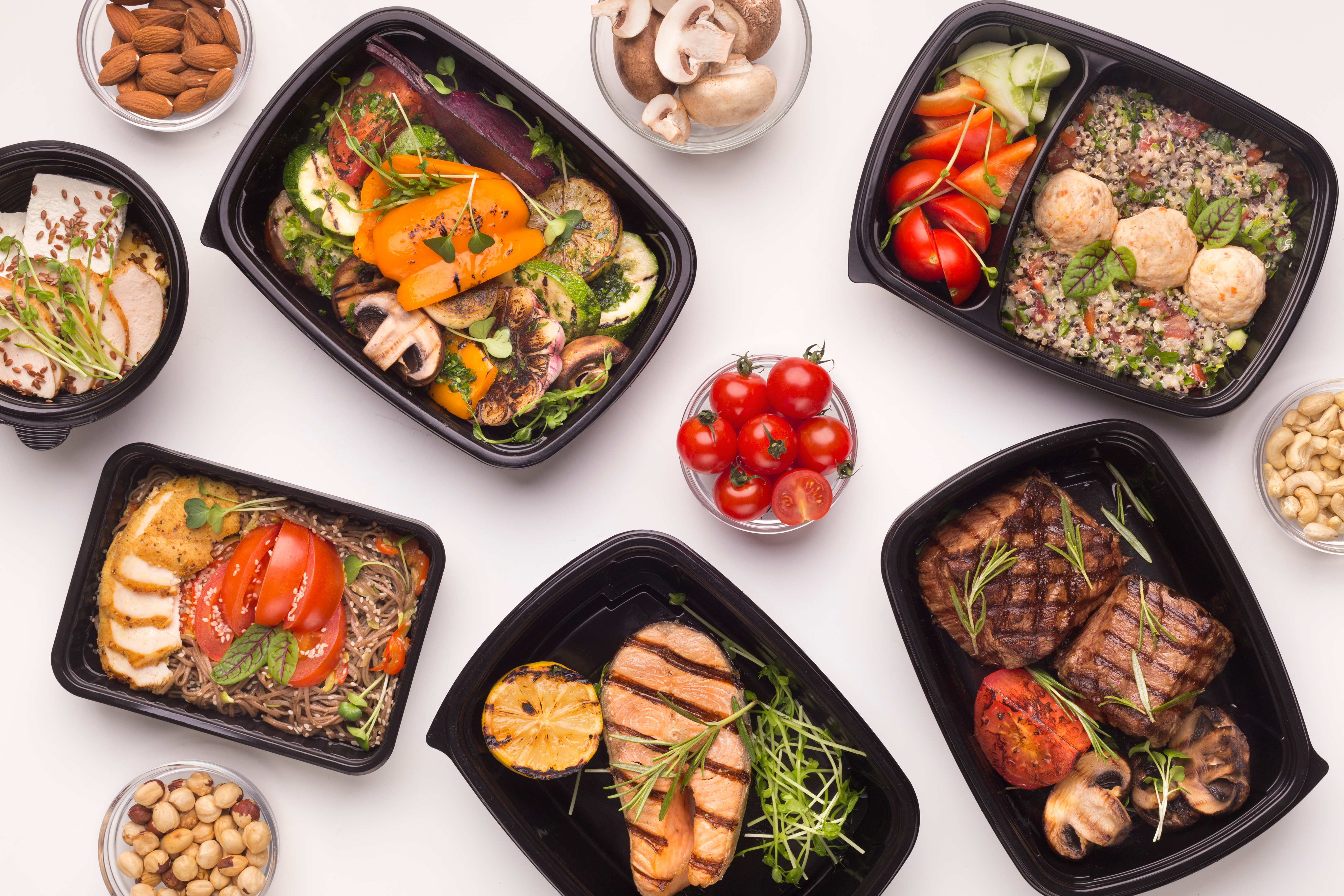Chefs and caterers are always looking to reach more members of the public with their delicious food. And although a chef may be a genius at turning humble ingredients into a culinary masterpiece – that doesn’t mean marketing their business comes as easily to them, especially in this overwhelming and confusing age of digital markets.
With private events difficult to arrange and more consumers happy to order food for delivery, caterers and independent chefs have new opportunities; and therefore, need new ways to connect with customers.
Happily, a new wave of tech platforms is helping chefs and food entrepreneurs do just that by enabling them to reach customers directly.
These platforms come in a variety of forms, but they have one thing in common: they help chefs and virtual restaurant brands get their food out to customers more efficiently for a more direct exchange of revenue.
Apps like this are popping up all over the U.S., so it makes sense to make shared use kitchen tenants aware. That way, as they scale up their business, they will simultaneously need to book more time in your shared kitchen. Win, win anyone?
In this post, we’ll compare and contrast some of the new platforms that are gaining traction among shared kitchen owners and their chef tenants. But first, let’s take a closer look at what constitutes a chef-to-consumer platform and compare the different types of tech platforms to choose from.
What is a Chef-to-Consumer Marketplace?
Chef-to-consumer marketplace apps allow chefs, caterers, and other producers to add dishes, meal kits, and other available food products to an online menu for users to browse through and order through the app. The food is either delivered directly to their door or they come and collect it at a centralized location.
Some of these platforms are raising serious money – ChefUnity, for example, received $47 million in venture capital earlier this year to take its total funding to $70 million.
There are some variations in this type of platform as follows:
- Marketplaces for chefs to sell meals produced in a shared kitchen or ghost kitchen.
- Software providers that help chefs set up their own apps to sell mealsPlatforms that connect home cooks with local customers to pick up meals.
- Media platforms that help chefs grow an audience and then monetize it by offering products and meals for sale.
You’ll also find meal kit subscription services that hire full-time chefs and nutritionists to offer their own menu plans. But we’re not going to talk about those here, as we’ll focus more on platforms that allow chefs to offer their own menus.
Here are the hottest new apps to hit the market for chefs and caterers to reach customers directly.
Direct-to-Consumer Marketplace Apps Worth Sharing with Your Tenants
Below is a breakdown of 10 of the hottest apps and software platforms in the chef-to-consumer world. Some operate nationwide, others concentrate on certain areas, but many would operate more widely given a higher demand in other locations.
We’ve added information on the fee structure where available, although some platforms prefer the chef to apply first before revealing the details.

Castiron is a software solution that helps chefs build ordering and e-commerce websites to get their products out to consumers.
The software offers tools and features specially built for kitchen-based creators, to assist chefs and caterers deal with allergens, special dietary requirements, food delivery, and other needs specific to food producers.
Castrron is free to get started on and there’s no subscription. Creators can choose to pass the transaction fees on to the customer, spilt them 50/50, or cover them in full.

Hungry House is a Brooklyn-based marketplace for local food businesses to sell their products to locals. The twist here is that Hungry House takes care of all the sourcing of ingredients, cooking, and delivery. As a chef, you develop your menu, add it to the website, and the rest is taken care of.
Hungry House states that it’s committed to working with others who value sustainability and quality, including suppliers, farmers, producers, cooks, and caterers – so the ethos fits with that of many shared kitchen owners and tenants who champion their local food economies.
Customers can add a mix of items from different virtual restaurants to their cart and get them all delivered, or pick them up, in one order.

CookUnity connects chefs with customers in need of ready-made meals to eat at home. Customers choose their meals two weeks in advance on a subscription model and they arrive ready to be reheated at home.
In contrast to a typical takeout order that is often considered a naughty treat, the meals are more geared towards busy people who want regular nutritious home-cooked meals without having to cook every night. The team can even tailor a menu for each customer’s dietary needs.
CookUnity also has a strong ethos to build hyperlocal food systems by celebrating chefs, local producers, and farmers and connecting them with nearby customers.
For chefs, CookUnity provides kitchens, operational services, and the online platform on which to sell meals.

Shef connects local chefs with hungry foodies, delivering meals to be heated up and served at home. Chefs wishing to join the platform can sign up online by submitting a sample menu and entering their phone number. Then complete a food tasting, food safety assessment and create a final menu.
The platform champions the chefs, or in this case ‘shefs’, who are often from diverse backgrounds serving a variety of global cuisines. The platform aims to be accessible to everyone and has meals for as little as $7.

Parsley is an app that helps anyone find a local meal. It equips chefs to add meals to a marketplace and customers can browse and order what they want. The unique on-demand option lets home cooks quickly add dishes, that they might already be cooking, to the app. A home cook could add a meal if they have two portions going spare, for example.
Parsley charges a fee on each order and chefs get paid within 48 hours by Venmo or Payal. The service waived fees for the rest of 2021 to help chefs build their brands on the platform so now would be a good time to get started! Note that local health department regulations need to be considered if wanting to work out of your home kitchen.

Ready Kit specializes in providing meal kits for specific communities. Based in Madison, Wisconsin, the company provides software to help chefs and entrepreneurs manage their own meal-kit business wherever they are.
The service includes tools to create your own ordering app and website, take payments online, and share recipes with customers. It also comes with built-in analytics, reporting, and support.

If you fancy yourself as a content creator, presenter, or have ambitions to be a TV chef, as well as selling meals, Tastemade might be the service for you. Tastemade has a community of chefs that can share their passion and culinary creations with an audience of hungry viewers. Tastemade has its own online TV channel and a popular blog populated by video and recipe content from its chefs.
The goal for Tastemade’s users is to build a loyal following before monetizing your brand. The service supports you as a creator of content and provides marketing and software services to guide you in creating a store to sell your products and meals.

California-based Homemade utilizes Bill AB-626, which makes it legal to sell food produced in a California home kitchen, to offer chef-made meals via its ordering marketplace.
Although the bill is effective in the whole state of California, individual counties have to opt-in. Riverside County was the first county to opt-in and the company hopes many more will follow suit.
To begin, chefs can download the app and sign up, before getting certified with their local authority. The last step is to upload your profile, dishes, and mouth-watering photos, and you’re good to go.
Payments are made via transfer into your Paypal account within 72 hours of an order being completed. Fees of 7.5% are charged to the customer so there are no fees for chefs.

WoodSpoon champions home cooks and home-based chefs by helping them share their food with the public. Customers can browse the WoodSpoon app – which showcases all the chefs and different dishes available – and order their meals on the app. The food is then delivered to the customer’s door, ready to eat.
Chefs can sign up online to use WoodSpoon and then go through a vetting process. Once they are approved, they can upload a menu and schedule of when their meals are available. WoodSpoon takes care of the delivery from the chef’s home, or shared kitchen space, to the customer’s location.
By taking care of the ordering app, marketing, and delivery, WoodSpoon makes it easy for the chefs to get started quickly. Fees for delivery, service, and small order penalties are covered by the customer, which may put some people off, but means the chef isn’t losing their margin.

DishDivvy is a chef-to-consumer marketplace operating in multiple US cities. Rather than simply showing your dishes on a feed with many others, DishDivvy also offers a dedicated page where chefs can upload more information such as their career history, culinary personality, and their menu.
DishDivvy has more sophisticated tech features than a lot of the other forementioned platforms, including a menu builder and management wizard, smart dish scheduler, and in-app chat with customers.
Although there are no fees to join or add your menu to the site, DishDivvy charges a 15% fee on every transaction.
Choose Your App & Get Set Up in a Professional Shared Kitchen
Chef-to-consumer marketplaces are popping up all over the country, offering a new channel of revenue and a platform for chefs who are looking to connect with customers near them.
If you’re a chef researching the options in your area to reach customers, make sure to check the local laws with regards to your food production premises. Although some areas allow home cooks to sell meals directly out of their home kitchens, many don’t.
Besides, there are many advantages and efficiencies to benefit from by making it official and renting space in a shared commercial kitchen. Not to mention the joys of not having to turn your home into a food production unit.
To find local shared kitchen space in your area, head to The Kitchen Door, where you can enter your city or zip code and get a list of approved shared kitchens in your locale.
And for more information about running a small food business and local legislation where you are, The Food Corridor has a wealth of resources, reports, and free guides to put you in the know


